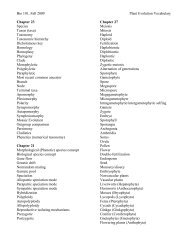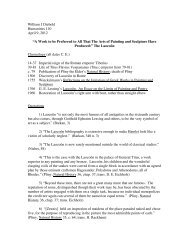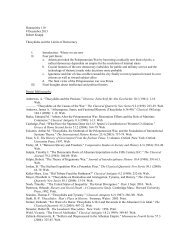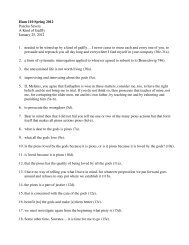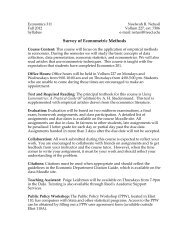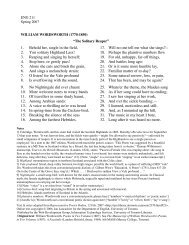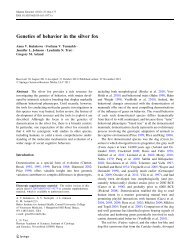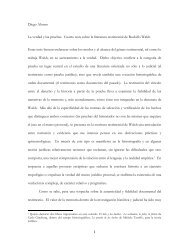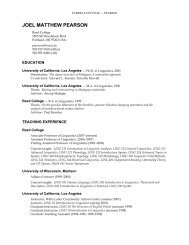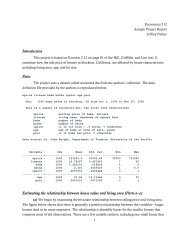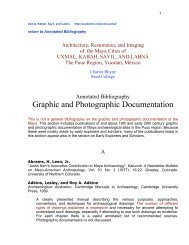REED COLLEGE SCIENCE OUTREACH PROPERTIES OF MATTER
REED COLLEGE SCIENCE OUTREACH PROPERTIES OF MATTER
REED COLLEGE SCIENCE OUTREACH PROPERTIES OF MATTER
You also want an ePaper? Increase the reach of your titles
YUMPU automatically turns print PDFs into web optimized ePapers that Google loves.
Lesson Five- What is pH? 1<br />
Objectives<br />
o Students will learn about acids and bases, indicators, and the pH scale.<br />
Lesson Background- Acids, Bases, and Indicators<br />
So far, most of the properties of matter that students have learned about (magnetism &<br />
physical states) are all physical properties. Many of the other properties that students have<br />
thought of are most likely also physical properties (e.g. color, weight, density, etc.). Now that<br />
students also have a basic understanding of atoms and molecules, we will begin to explore<br />
matter’s chemical properties.<br />
Today students will learn about an important property that chemists use to categorize<br />
chemicals. Chemists divide substances into three categories: acidic, basic, or neutral. Many<br />
chemicals can be classified as either acids or bases. These two types of chemicals are opposites<br />
in chemistry and will react when they are mixed. Many other substances do not act as either<br />
acids or bases, and these substances are called neutral.<br />
• Examples of acids are vinegar, battery acid, and stomach acid.<br />
• Examples of bases are ammonia, detergents, drain cleaners, and baking soda.<br />
• Water, table salt, and plastics (etc.) are considered neutral.<br />
The strength of acids and bases ranges on a scale. Very weak acids and bases are not harmful<br />
to humans and can be detected according to taste. Acids taste sour while bases taste bitter.<br />
However, strong acids and bases are highly corrosive (and hazardous) so the safest way to<br />
determine whether a chemical is acidic or basic is to measure its acidity with an indicator.<br />
Indicators are chemicals that turn different colors depending on whether they are exposed to<br />
an acid or a base. (There are also indicators that will turn color in the presence of other<br />
substances. These indicators are very useful for many other purposes, e.g. blood sugar tests,<br />
lead paint tests, pregnancy tests…)<br />
Today students will use an indicator made from cabbage juice. Cabbage contains a chemical<br />
called anthocyanins that react to acid and bases. Cabbage juices can change to yellow, green,<br />
or blue when exposed to bases and red/pink when exposed to acids. (Many other plants also<br />
have indicator properties.)<br />
Scientists have devised a number scale (called the pH scale) to specify how acidic or basic a<br />
solution is. The scale ranges from 0-14, with 0 indicating a strong acid, 7 indicating a neutral<br />
substance, and 14 indicating a strong base.<br />
1 Lesson Adapted from:<br />
“Of Cabbages and Kings”, Chemistry in the K-8 Classroom, OMSI, 2007.



